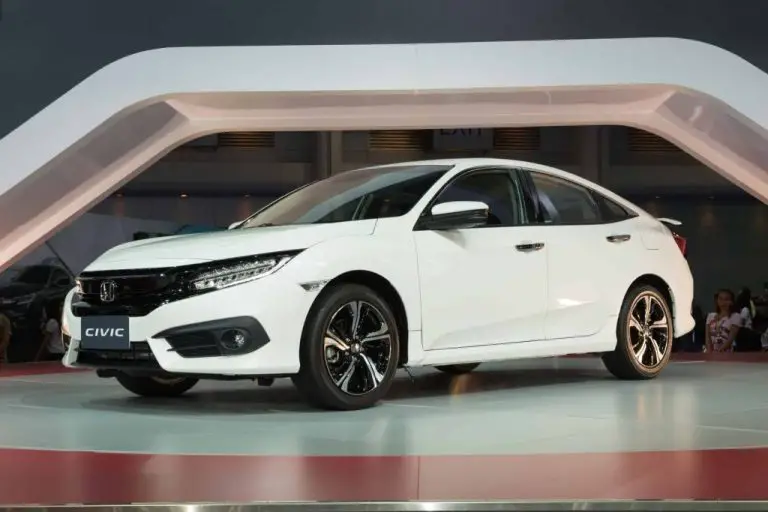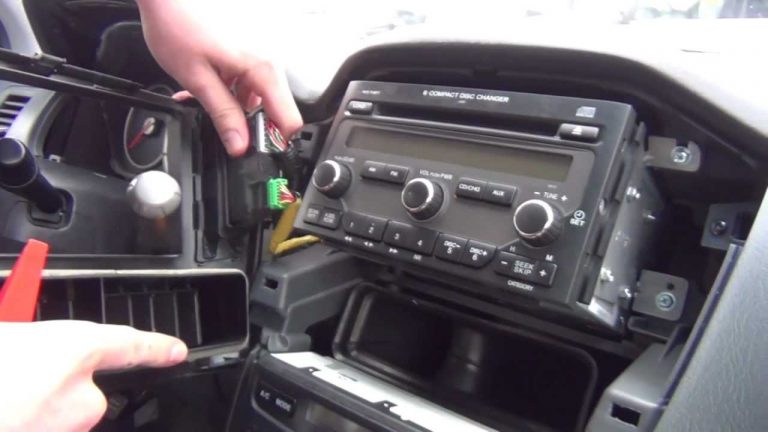A Honda Civic VP is a five-door hatchback that was produced by the Japanese automaker Honda from 2006 to 2010. The car was based on the seventh-generation Civic sedan and shared its platform and most of its components with other models in the range. It was available with a 1.8-liter four-cylinder engine and could be equipped with either a manual or automatic transmission.
The Civic VP was discontinued in 2010, and replaced by the more stylish eighth-generation Civic Hatchback.
The Honda Civic is a line of cars manufactured by the Japanese company Honda. The first Civic was introduced in 1972 as a two-door model, followed by a three-door hatchback in 1974. A four-door sedan was introduced in 1976, and a five-door hatchback in 1979.
The Civic has been through several generational changes, with the most recent being introduced in 2015. The Civic Vp is the top trim level for the ninth generation of Civics, and it comes with many features that are not available on lower trim levels. These features include 18-inch alloy wheels, LED headlights, fog lights, and taillights, heated front seats, leather upholstery, a navigation system with voice recognition, and more.
If you’re looking for a top-of-the-line Honda Civic, the Vp is the trim level for you.

Credit: www.youtube.com
What’s the Difference between Lx And Lx S?
There are a few key differences between the LX and LX S trims of the Honda Civic. The LX is the base model, while the LX S is a step up from that. Some of the main differences include:
-The LX has a 158 horsepower engine, while the LX S has a 174 horsepower engine. -The LX comes with 16″ alloy wheels, while the LXS comes with 17″ alloy wheels. -The LX has manual air conditioning, while the LXS comes with automatic climate control.
-The LX has a 5″ display audio system, while the LXS comes with an 8″ display audio system.
What Does Honda Civic Stand For?
The Honda Civic is a compact car that was first introduced in 1972. The name “Civic” comes from the Latin word for “city.” The Civic was designed to be a fuel-efficient and affordable car that would appeal to a wide range of buyers.
Over the years, the Civic has undergone several redesigns and has become one of Honda’s best-selling models. Today’s Civics are available in sedan, coupe, and hatchback body styles. They offer a variety of engines ranging from an ultra-efficient 1.5-liter turbocharged four-cylinder to a powerful 2.0-liter turbocharged four-cylinder. No matter which engine you choose, you can expect excellent fuel economy and plenty of power for daily driving.
What Does the S Stand for in a 2025 Honda Civic?
The S in a 2025 Honda Civic stands for “Sport.” The Sport model is the highest trim level for the Civic and comes with features like a more powerful engine, 18-inch wheels, and a sport-tuned suspension. It’s the perfect choice for drivers who want the most out of their Civic.
ALL NEW HONDA CIVIC VP
Honda Civic Vp 2009
Assuming you would like a blog post about the 2009 Honda Civic VP: The Honda Civic is a popular compact car that has been in production since 1972. The ninth generation of the Civic was introduced for the 2006 model year.
For 2009, the Civic received a few minor updates. The most notable change was the addition of Vehicle Stability Assist (VSA) to all models except for the base DX trim level. The 2009 Honda Civic VP (Value Package) sedan is powered by a 1.8-liter four-cylinder engine that produces 140 horsepower and 128 pound-feet of torque.
The engine is mated to a five-speed manual transmission or an optional five-speed automatic transmission. (Read also: What is D3 2 1 in Automatic Transmission?)
Fuel economy is estimated at 26 mpg city/34 mpg highway and 29 mpg combined with the manual transmission and 25/36/29 with the automatic transmission. Standard features on the Civic VP include 15-inch steel wheels, full power accessories, air-conditioning, cruise control, keyless entry, cloth upholstery, split folding rear seatbacks, and a four-speaker sound system with a CD player and auxiliary audio jack.
Optional features include 16-inch alloy wheels, foglights, a sunroof, heated front seats, and steering wheel audio controls. For safety, every 2009 Honda Civic comes standard with antilock brakes (front disc, rear drum on DX), stability control (except DX), front side airbags, and side curtain airbags.
Honda Civic Vp 2005
The Honda Civic VP (2005) is a reliable and affordable vehicle that is perfect for those who are looking for an economical car. The Civic VP has a 1.8L engine that is capable of reaching up to 34 MPG on the highway, making it a great choice for those who are looking to save money on gas. In addition, the Civic VP comes standard with features such as air conditioning, power windows, and power locks, making it a great value for the price.
Honda Civic Vp 2011
The 2011 Honda Civic is a compact car that was available in both sedan and coupe body styles. The sedan had room for five passengers, while the coupe could seat four. Both came standard with front-wheel drive, but the all-wheel drive was an option on the sedan.
Under the hood, the Civic had a 1.8-liter four-cylinder engine that produced 140 horsepower and 128 pound-feet of torque. A five-speed manual transmission was standard, but a five-speed automatic was optional. Regarding fuel economy, the Civic got an EPA-estimated 26 mpg city/34 mpg highway with the manual and 24/33 with the automatic.
The Civic came standard with features like Bluetooth connectivity, power windows and locks, cruise control, and a CD player. Higher trims added features like navigation, heated seats, sunroofs, and premium audio systems. For safety, every model came equipped with antilock brakes (front disc/rear drum on sedans or front/rear disc on coupes), stability control, front side airbags (sedan only), full-length side curtain airbags (coupe only), active front head restraints, and child seat anchors.
In government crash tests, the Honda Civic earned a perfect five out of five stars for overall protection in frontal impacts. The Insurance Institute for Highway Safety gave it its best rating of “Good” in moderate overlap frontal offset impact tests as well as side impact, rollover strength, and rear crash protection. The National Highway Traffic Safety Administration awarded the 2011 Honda Civic an overall safety rating of four out of five stars.
It received three stars in frontal crash tests, four in rollover risk tests, and five in side impact protection tests.
Honda Civic Vp 2010
The 2010 Honda Civic VP is a great car. It’s comfortable, efficient, and stylish. The only problem is that it’s not very reliable.
We’ve had ours for about two years now, and it’s already had to be taken in for repairs several times. The most recent issue was with the engine, which needed to be replaced. Luckily, we have an extended warranty, so we didn’t have to pay anything out of pocket.
However, the repairs still cost us a lot of time and inconvenience. We love our Civic VP, but we’re starting to wonder if it’s really worth all the hassle.
Conclusion
A Honda Civic VP is a performance-oriented version of the popular Honda Civic sedan. It was first introduced in 1992 and was only available in Japan. The car featured a 1.6L DOHC engine with VTEC technology, as well as larger brakes and suspension components.





